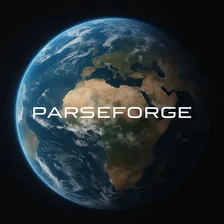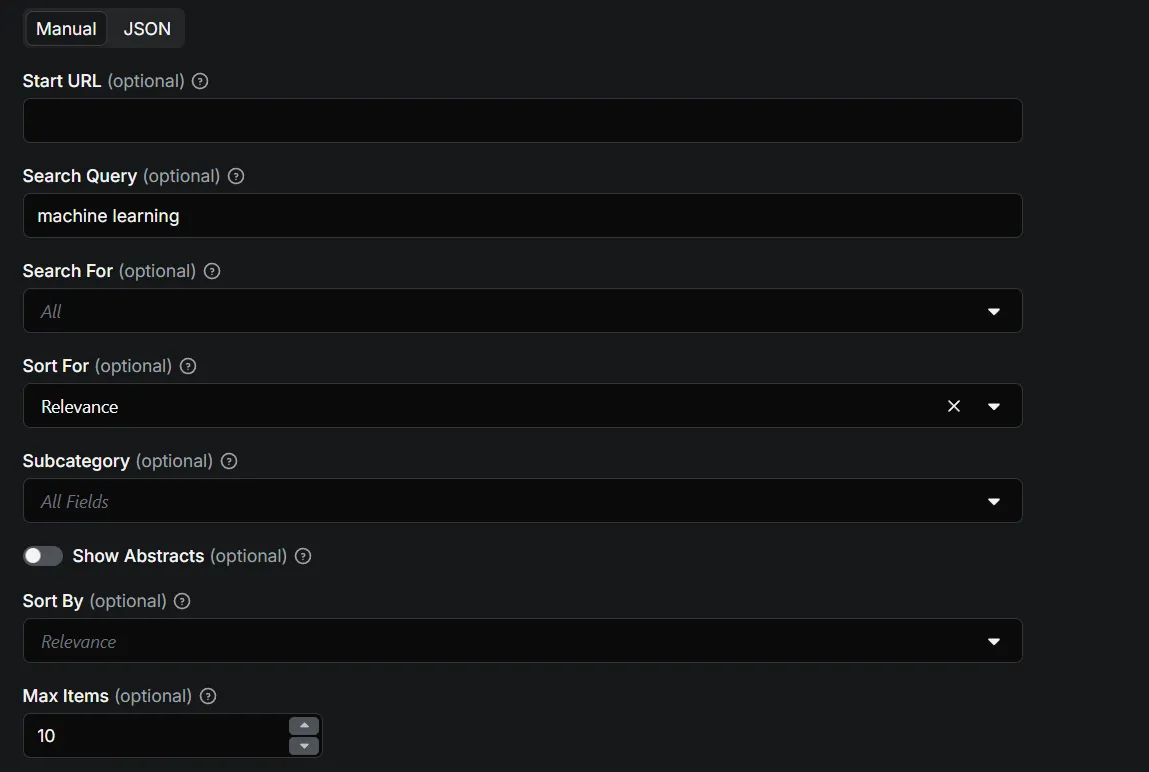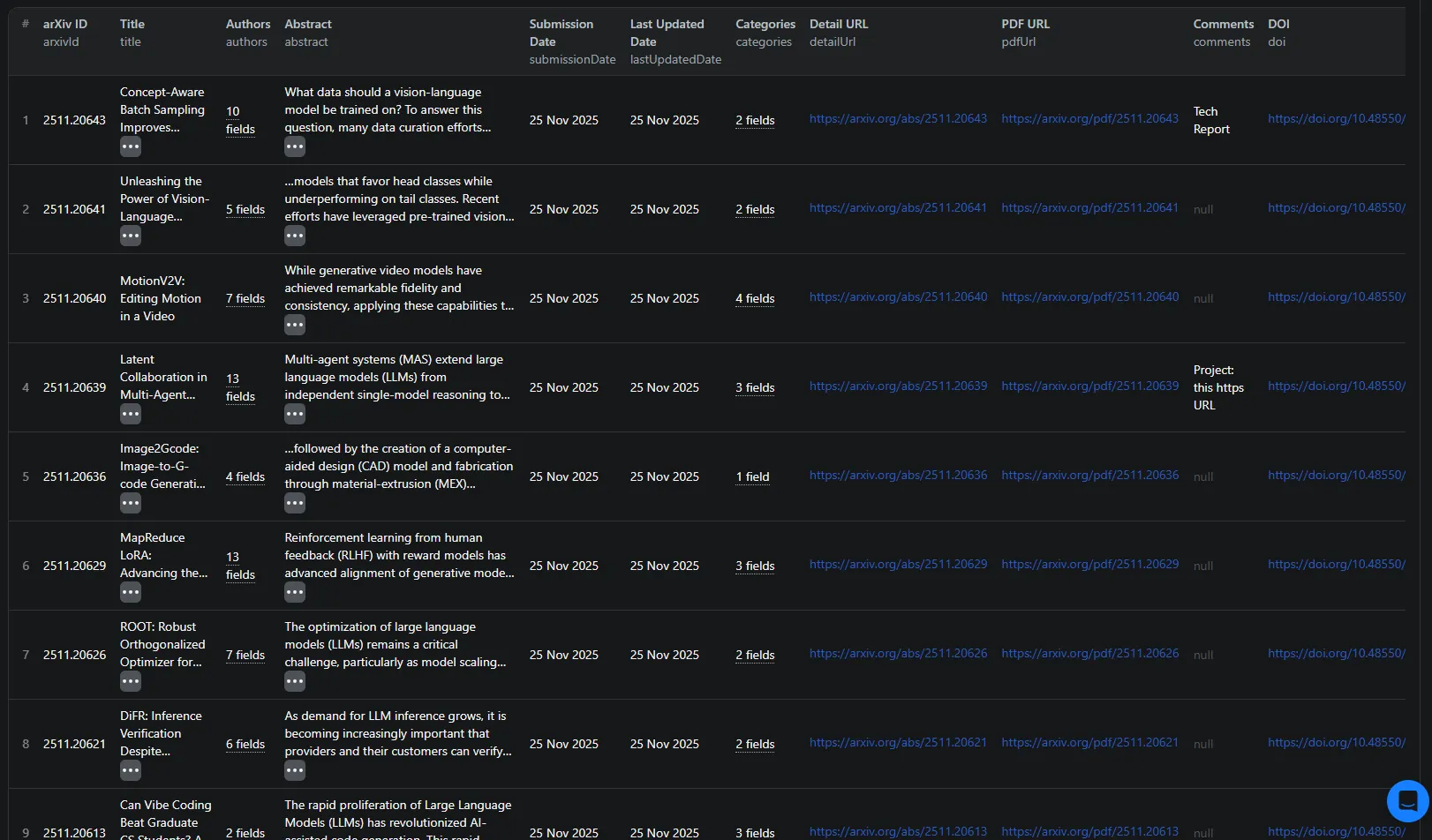arXiv Scraper
Pricing
Pay per event
arXiv Scraper
Comprehensive arXiv scraper for extracting scholarly article data across physics, math, CS, biology, finance, statistics, engineering, and economics. Automates access to arXiv’s large preprint archive, providing structured metadata for researchers, academics, and data scientists.
Pricing
Pay per event
Rating
5.0
(1)
Developer

ParseForge
Actor stats
0
Bookmarked
2
Total users
1
Monthly active users
8 days ago
Last modified
Categories
Share
📄 arXiv Scraper
🚀 Extract comprehensive scholarly article data from arXiv.org - the world's largest open-access repository of preprints. Perfect for researchers, academics, data scientists, and institutions who need automated access to cutting-edge research papers across physics, mathematics, computer science, and more.
The arXiv Scraper collects detailed information from arXiv.org, a free distribution service and open-access archive for nearly 2.4 million scholarly articles. Whether you're building a research database, tracking the latest developments in your field, or analyzing publication trends, this tool delivers complete paper metadata with just a few clicks.
Target Audience: Researchers, academics, data scientists, research institutions, graduate students, librarians, and knowledge management professionals
Primary Use Cases: Academic research, literature reviews, research database building, trend analysis, citation tracking, knowledge discovery
What Does arXiv Scraper Do?
This tool collects comprehensive scholarly article data from arXiv.org, supporting multiple search methods and delivering detailed information about research papers across all scientific disciplines. It delivers:
- Complete Paper Information: Title, authors, abstract, submission dates, and arXiv ID
- Full Metadata: Categories, subject classifications, comments, journal references, DOI
- PDF Access: Direct links to download papers in PDF format
- Research Context: License information, related papers, and citation data
- Date Tracking: Submission dates and last updated dates for version tracking
- Subject Classification: Full category tags and subject classifications for filtering
- And much more
Business Value: Build comprehensive research databases, track the latest developments in your field, automate literature reviews, and discover cutting-edge research without manual browsing and data entry.
How to use the arXiv Scraper - Full Demo
Watch this demo to see how easy it is to get started!
[Demo video coming soon]
Input
To start arXiv web scraping, simply fill in the input form. You can scrape arXiv based on:
- Search Query - Enter any search term (e.g., "machine learning", "quantum computing", "neural networks"). This searches across titles, abstracts, and authors.
- Search For - Select the archive or category to search within (All, Physics, Mathematics, Computer Science, etc.)
- Sort For - Choose how to sort results: Announcement date, Submission date, or Relevance
- Subcategory - Select the field to search within (All Fields, Title, Author, Abstract, etc.)
- Show Abstracts - Toggle to show abstracts in search results
- Sort By - Choose how to sort results: Relevance, Submitted Date, or Last Updated Date
- Max Items - Set the maximum number of papers to collect (optional). Free users: Limited to 100. Paid users: Optional, max 1,000,000. Leave empty for unlimited (paid users only).
- Start URL - Alternatively, you can paste a direct arXiv search URL. This is useful if you've already created a search on the website and want to use that exact URL.
Pro Tip: 💡 You can either use the search query and filters, OR paste a start URL. If you use a start URL, the other filters won't apply.
Here's what the filled-out input schema looks like:

And here it is written in JSON:
Output
After the Actor finishes its run, you'll get a dataset with the output. The length of the dataset depends on the amount of results you've set. You can download those results as an Excel, HTML, XML, JSON, and CSV document.
Here's an example of scraped arXiv data you'll get if you decide to scrape papers:

What You Get:
- Complete Research Data: Every field needed for comprehensive paper records
- Full Text Access: Direct PDF links for immediate paper access
- Rich Metadata: Authors, abstracts, dates, categories, and classifications
- Citation Information: DOI, journal references, and related papers when available
- Version Tracking: Submission and update dates to track paper revisions
Download Options: CSV, Excel, or JSON formats for easy analysis in spreadsheet software, reference managers, or database systems
Why Choose the arXiv Scraper?
- ⚡ Comprehensive Data Collection: Get complete research paper information in one automated process, saving hours of manual browsing
- 🎯 Advanced Filtering: Search by query, archive category, subcategory, and sorting options - find exactly what you need
- 📚 Research-Grade Data: Perfect for researchers, academics, and institutions building research databases
- 🔄 Automated Workflows: Schedule regular runs to track the latest papers in your field automatically
- 💾 Export Flexibility: Download data in multiple formats (CSV, Excel, JSON) for use in any analysis tool or reference manager
- 📄 PDF Access: Direct links to download papers in PDF format for immediate access
Time Savings: What would take days of manual browsing and data entry can be completed in minutes with automated collection
Efficiency: Collect hundreds of research papers automatically while you focus on reading and analysis
How to Use
- Sign Up: Create a free account w/ $5 credit (takes 2 minutes)
- Find the Scraper: Visit the arXiv Scraper page on Apify
- Set Input: Add your search query or paste a start URL (we'll show you exactly what to enter)
- Run It: Click "Start" and let it collect your research data
- Download Data: Get your results in the "Dataset" tab as CSV, Excel, or JSON
Total Time: Less than 5 minutes from sign-up to downloaded data
No Technical Skills Required: Everything is point-and-click - just enter your search terms and go
Business Use Cases
Academic Researchers:
- Build comprehensive literature databases for research projects
- Track the latest developments in your field automatically
- Collect data for systematic reviews and meta-analyses
- Monitor specific research topics or authors over time
Research Institutions & Libraries:
- Automate collection of new papers in specific research areas
- Build institutional research databases with complete metadata
- Create subject-specific paper collections and repositories
- Maintain up-to-date research collections
Data Scientists & Analysts:
- Analyze publication trends and patterns across research fields
- Track research activity in emerging technologies
- Build datasets for research recommendation systems
- Conduct bibliometric analysis and citation studies
Graduate Students & PhD Candidates:
- Collect papers for literature reviews efficiently
- Track papers in your research area automatically
- Build personal research databases with complete metadata
- Discover related papers and research connections
Using arXiv Scraper with the Apify API
For advanced users who want to automate this process, you can control the scraper programmatically with the Apify API. This allows you to schedule regular data collection and integrate with your existing research tools.
- Node.js: Install the apify-client NPM package
- Python: Use the apify-client PyPI package
- See the Apify API reference for full details
Frequently Asked Questions
Q: How does it work?
A: arXiv Scraper is easy to use and requires no technical knowledge. Simply configure your search parameters (query, classification, date range, etc.) and let the tool collect the data automatically from arXiv.org.
Q: How accurate is the data?
A: The data is extracted directly from arXiv.org, ensuring accuracy and completeness. All fields match what you would see on the website, including titles, authors, abstracts, and metadata.
Q: Can I filter by research field or category?
A: Absolutely! Use the "Search For" field to filter by archive or category (All, Physics, Mathematics, Computer Science, etc.), and the "Subcategory" field to search within specific fields like Title, Author, Abstract, etc.
Q: Can I schedule regular runs?
A: Yes! You can set up schedules in the Apify Console to automatically collect new papers at regular intervals, keeping your research database up-to-date.
Q: What if I need help?
A: Our support team is here to help you get the most out of this tool. Contact us through the Apify platform for assistance.
Q: Is my data secure?
A: Yes, all data processing happens securely on Apify's platform. Your search queries and collected data are private and secure.
Integrate arXiv Scraper with any app and automate your workflow
Last but not least, arXiv Scraper can be connected with almost any cloud service or web app thanks to integrations on the Apify platform.
These includes:
Alternatively, you can use webhooks to carry out an action whenever an event occurs, e.g. get a notification whenever arXiv Scraper successfully finishes a run.
🔗 Recommended Actors
Looking for more data collection tools? Check out these related actors:
| Actor | Description | Link |
|---|---|---|
| Hugging Face Model Scraper | Extracts machine learning model data from Hugging Face | https://apify.com/parseforge/hugging-face-model-scraper |
| PR Newswire Scraper | Collects press releases and news content from PR Newswire | https://apify.com/parseforge/pr-newswire-scraper |
| GreatSchools Scraper | Extracts school information and ratings from GreatSchools | https://apify.com/parseforge/greatschools-scraper |
| GSA eLibrary Scraper | Collects government publication data from GSA eLibrary | https://apify.com/parseforge/gsa-elibrary-scraper |
| Open Library Scraper | Extracts book and bibliographic data from Open Library | https://apify.com/parseforge/open-library-scraper |
Pro Tip: 💡 Browse our complete collection of data collection actors to find the perfect tool for your business needs.
Need Help? Our support team is here to help you get the most out of this tool.
⚠️ Disclaimer: This Actor is an independent tool and is not affiliated with, endorsed by, or sponsored by arXiv.org or Cornell University. All trademarks mentioned are the property of their respective owners.

